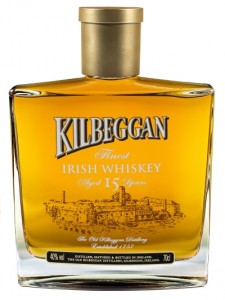In the 18 century Ireland had around 2000 stills in operation producing Irish whiskey. Today there are only 4 distilleries in operations. These are Cooley, Kilbeggan, New Midleton and Old Bushmills Distillery. In January 2012 Beam Inc., makers of Jim Beam and Maker’s Mark, purchased the last independently Irish owned distillery, Cooley Distillery.
Regulations for creating Irish whiskey are fairly simple compared to the requirements for the production of Bourbon and Scotch. The regulations are defined in the “Irish Whiskey Act, 1980.” The Act states to be labeled Irish whiskey it must adhere to the following requirements:
- spirits shall have been distilled in the State (aka Republic of Ireland) or in Northern Ireland from a mash of cereals which has been saccharified by the diastase of malt contained therein, fermented by the action of yeast and distilled at an alcoholic strength of less than 94.8% by volume in such a way that the distillate has an aroma and flavour derived from the materials used.
- spirits shall have been matured in wooden casks in warehouse in the State or Northern Ireland for a period of not less than three years.
- If the spirits comprise a blend of two or more such distillates, the product is referred to as a “blended” Irish whiskey and must meet all the above requirements.
Types of Irish Whiskey
 Blended whiskey makes up a majority of Irish whiskey being produced today. Some Blended Irish whiskies available today are: Bushmills Original, Jameson, Kilbeggan, Clontarf, Inishowen and Paddy to name a few. Jameson, for example, is created from a mash of malted and un-malted barley. It is then triple distilled in copper pot stills and aged in oak casks. The final product is blended with triple distilled whiskey and neutral spirits in just the right proportions to create the desired flavor profile.
Blended whiskey makes up a majority of Irish whiskey being produced today. Some Blended Irish whiskies available today are: Bushmills Original, Jameson, Kilbeggan, Clontarf, Inishowen and Paddy to name a few. Jameson, for example, is created from a mash of malted and un-malted barley. It is then triple distilled in copper pot stills and aged in oak casks. The final product is blended with triple distilled whiskey and neutral spirits in just the right proportions to create the desired flavor profile.
Single Malt whiskies are also produced. While they are not as common as other types they are available. Single malts are made from a mixture of malted barley or 100% malted barley, distilled using a pot still and produced by a single distillery. Some example of single malt Irish whiskies are: Bushmills 10, 16, 21-year-old and Locke’s Single Malt 8-year-old.
While Irish whiskey generally does not contain grains malted with peat there are a few that do contain this distinctive flavor. Cooley distillery produces an Irish whiskey called Connemara. The malted barley is dried in peat fired kilns which gives it the distinctive smokey flavor normally associated with Scotch whisky. It is twice distilled in copper pot stills and then aged in American Oak for many years. Connemara is considered to be a peated single malt.

I am thinking of developing a recipe for a Single Malt Peat Whiskey. Can’t Say Irish. My suggestion is this. Take one small bag of potting peat and let age in water for a week. Run off the tea from the peat and blend with clear water and a dark Barley Malt concentrate. Adjust Ph with either Sodium Bicarbonate or Lemon Juice until Ph is 7. Ferment with Turbo Yeast. Double distill to 180 proof. Store in 1Gal. Glass Containers with roasted Oak Shavings. Age for 3 years.
I would really like your input.